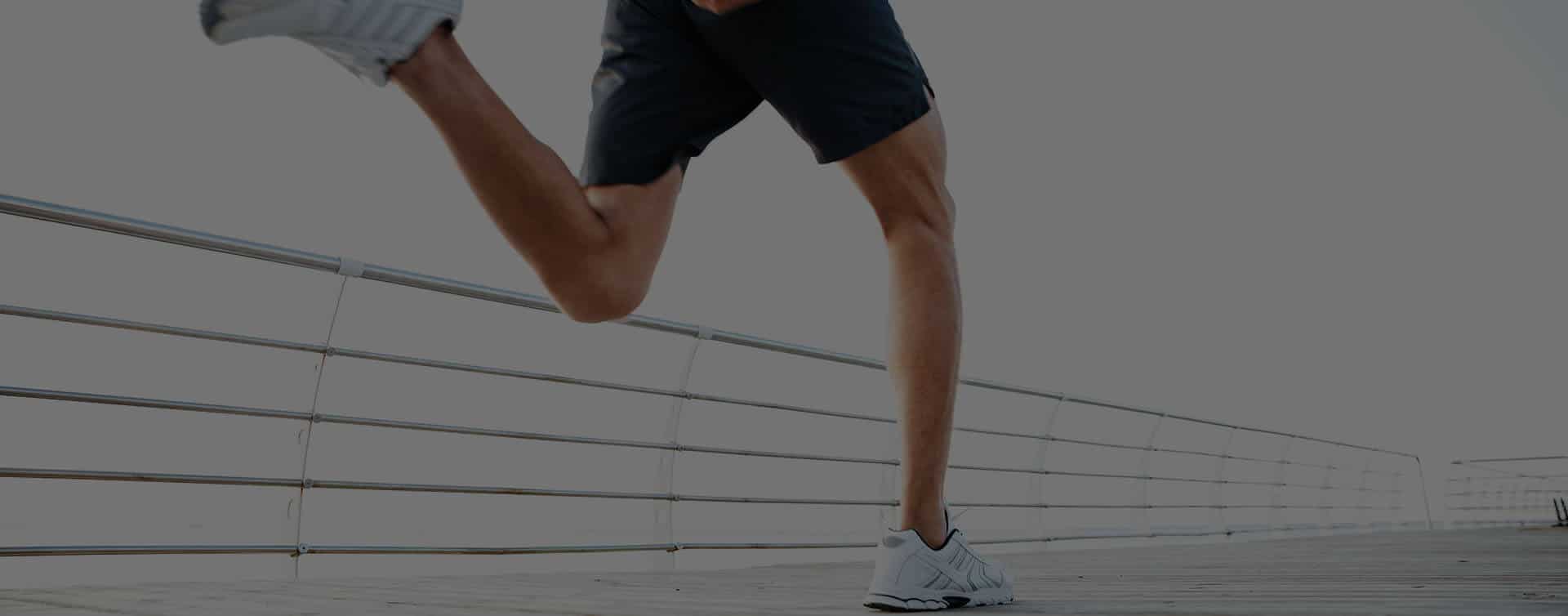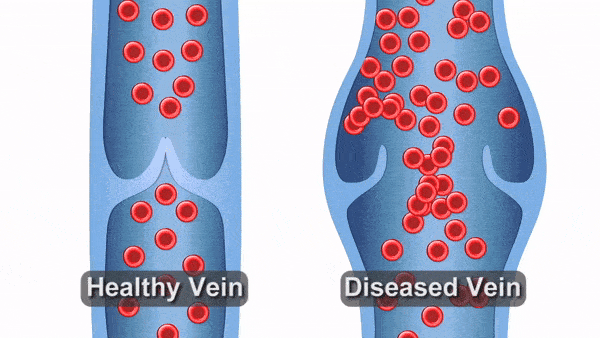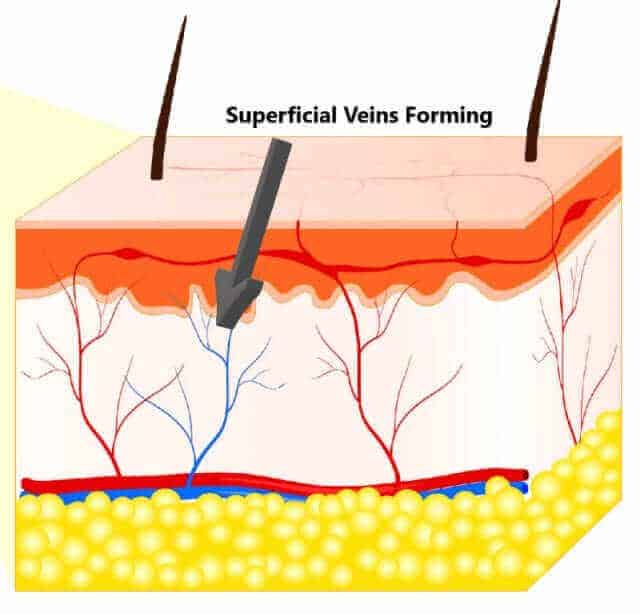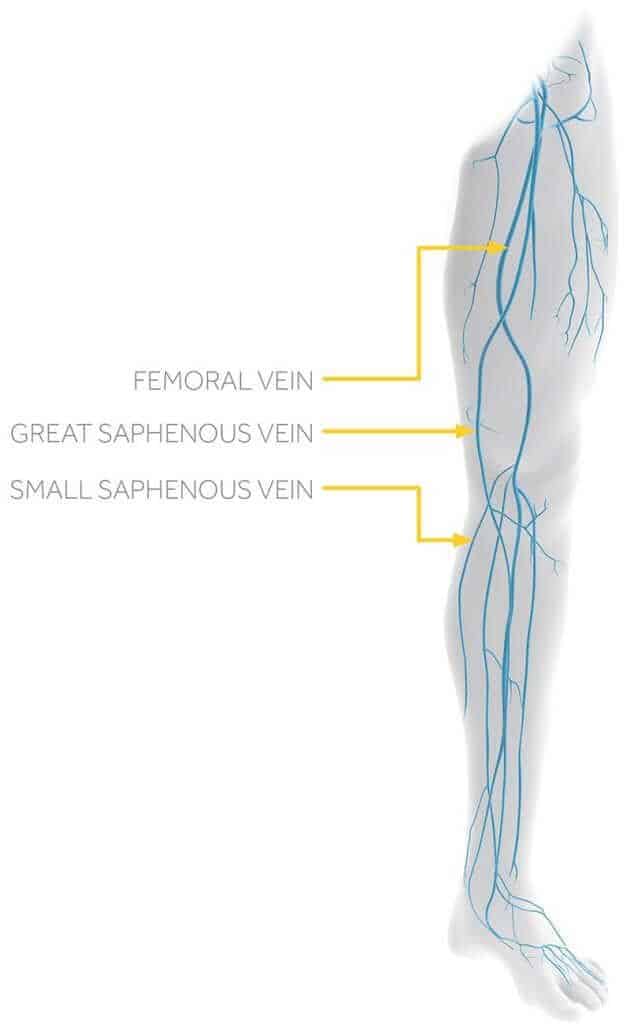VEIN DISORDERS

VEIN DISORDERS Overview
Varicose veins disorders and visible, unwanted veins are a common concern that many people have. 65% of people in the United States have some form of varicose veins. However, only 2-3 % of individuals with varicose veins seek treatment. At Coastal Vein Center in Newport Beach, our goal is to help our patients understand vein disorders and venous disease as well as our cutting edge technologies and therapies for treating these conditions.


WHAT CAUSES VEIN DISORDERS?
Varicose veins can affect both men and women. They can be caused by a range of factors including:
- A genetic disposition
- Standing or sitting for prolonged periods of time due to work or lifestyle
- Height
- Congenital valvular dysfunction
- Obesity And pregnancy
The most significant contributor is genetic disposition. Our veins contain valves that encourage blood flow to flow back up one way through the vein to the heart. A varicose vein or a diseased vein occurs when blood that is supposed to flow back up to the heart pools or gets trapped in the vein due to a damaged valve.
The diseased vein can continue to worsen overtime. As a result, new veins are formed to decrease the built up pressure in the superficial venous system. The new veins are created closer and closer to the surface of the skin – causing them to eventually become visible.

VEIN TYPES
There are three main vein types within the legs. These include:
Superficial Veins
Superficial veins are closest to the skin’s surface, however they are not visible. The Great Saphenous Vein and the Short Saphenous Vein are two main veins in this system.
Perforator Veins
These veins are the bridges between the deep and superficial veins. They are frequently the cause of ulcers in the lower leg.
Deep Veins
Deep veins are responsible for carrying a majority of the blood back to the heart from the legs. Deep veins are the most important vein system.
RISKS ASSOCIATED WITH VARICOSE VEINS
When left untreated, varicose veins can negatively impact the overall quality of life. Potential symptoms and risks include:
- Increased inflammatory and clotting markers
- Discomfort
- Skin changes
- Ulcers
- Clots
- Deep vein thrombosis
- Burning sensations
- Cramping
- Restless legs
RISKS ASSOCIATED WITH VARICOSE VEINS
More serious risks include:
- Clots in deep veins that can travel to the lungs
- Venous ulcers that are very difficult to treat
Venous disease is not cured on its own. The professionals here at Coastal Vein Care are passionate about providing our patients with the latest and most effective treatments for vein disorders. If you are interested in learning more about vein disorders and our collection of innovative treatments, feel free to reach out to us and speak to one of our experienced professionals. Contact us today and schedule your consultation towards improved health and wellness.
SPIDER VEINS
Spider veins are small red, purple, or blue vessels that appear turned and twisted in the skin. Typically found on the legs and face, they can develop from weak or damaged valves as well as well as a final result of deeper diseased veins. They can also be caused by hormone changes, exposure to sun and injuries. While spider veins are not typically cause for concern, they can pose a detriment to your aesthetic.
VARICOSE VEINS
Varicose veins are raised, large, swollen vascular vessels that appear twisted and turned through the skin’s surface. While they generally develop in the legs, they can appear on the face, as well. Their development is often the result of damaged or weak blood valves along with other factors, some of which include: family genetics, occupations that involve lots of standing, obesity, hormone shifts, and certain conditions that increase pressure in the abdomen such as constipation, tumors, and external garments of tightly-fitted clothing.
What separates spider veins from varicose veins is that unlike spider veins, varicose veins may cause discomfort, heaviness, or swelling of the affected area. Varicose veins may also pose a risk of a compromise in one’s blood circulation.
The most common treatment for spider veins and varicose veins in Newport Beach involves injecting a solution into the vein causing it to collapse and eventually fade. Laser treatments are also sometimes used for spider vein treatment.
What are the medical-grade compression stockings?
Compression stockings/ socks are recommended to treat the early stages of venous insufficiency. It helps to compress the lower leg and reduce swelling and relieve other symptoms of varicose veins. They come with different levels of compression and fitted by trained people. This reduces the risks of DVT deep vein thrombosis and fastens the process of healing with increasing chances of healing.
When should I seek medical advice for damaged veins?
Conservative therapies can help reduce the risks of getting the condition to worsen with damaged veins. You can try home care to improve the effect on symptoms. You can exercise, maintain a healthy weight, elevate your legs, and wear compression stockings. When left untreated, varicose veins can result in sores, blood clots, ulcers, Deep Vein Thrombosis (DVT). Varicose veins should be treated as recommended by individual physicians to avoid complications in the future. As unpleasant as they can be, varicose veins can be easily treated. Having surgery is a better choice than the look of it to keep the veins healthy.
Osim toga, boravak u nekoliko mjeseci pod prijetnjom smrti često uzrokuje veće zanimanje za seks, nota psihologa. To uzrokuje tipičan poslijeratni viagra cijena procvat. Te su trendove već usvojile mnoge velike korporacije da je proljeće pokrenulo oglašavanje s porastom seksualnog sadržaja u Europi i Sjedinjenim Državama.
